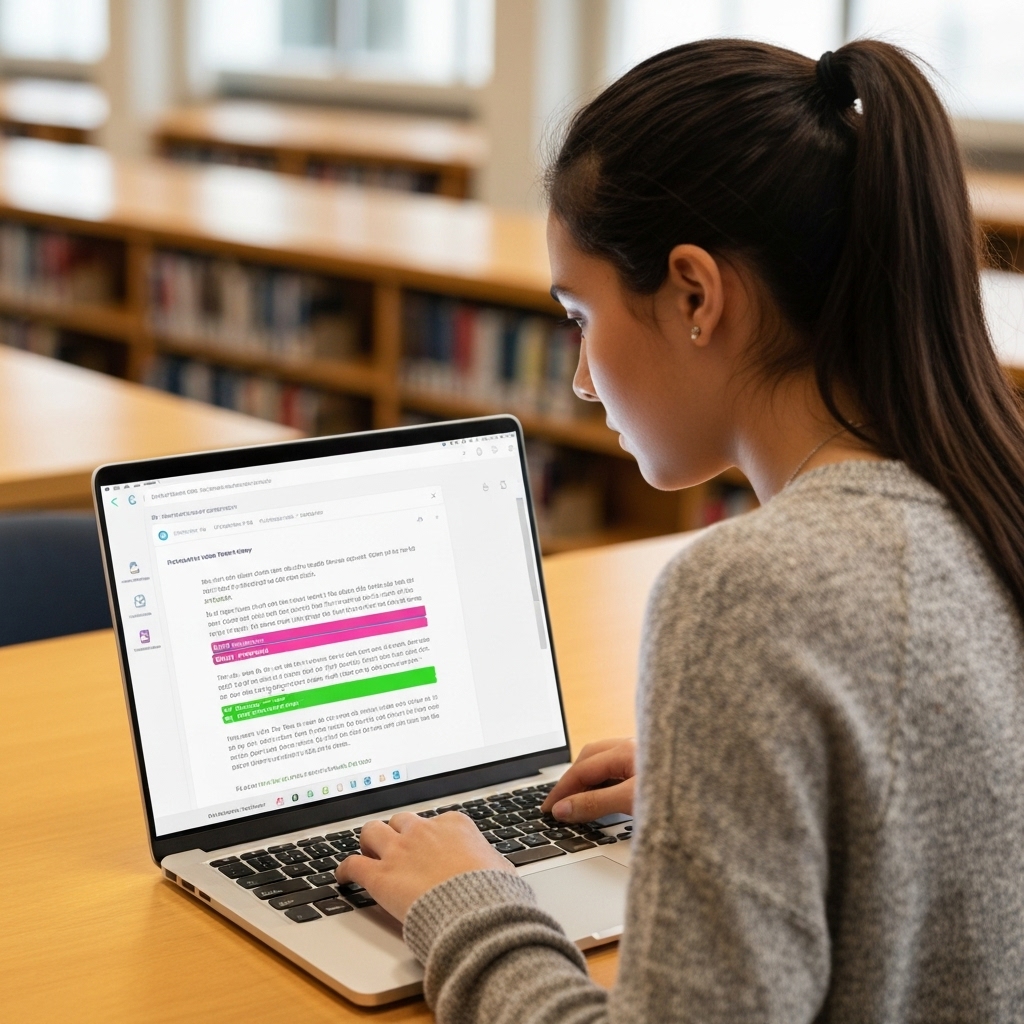Best Free AI Tools for Students 2025: Boost Productivity and Learning
Best Free AI Tools for Students 2025: Boost Productivity and Learning
Artificial intelligence is reshaping the academic landscape, offering students powerful tools to improve efficiency and comprehension. With AI-powered writing assistants like Grammarly, learners can refine their essays, detect grammatical errors, and enhance clarity in real time. These tools go beyond simple spell-checking by providing contextual suggestions, tone adjustments, and even plagiarism detection, ensuring that written work meets high academic standards. As students juggle multiple assignments, such AI support helps maintain consistency and quality across all submissions.
Beyond writing, AI is proving invaluable in time management and study planning. Applications like Reclaim.ai use intelligent algorithms to automatically schedule study sessions, balance coursework deadlines, and integrate personal commitments into a cohesive calendar. By analyzing user behavior and priorities, these tools optimize daily routines, reducing stress and increasing productivity. This level of personalized organization allows students to focus more on learning and less on logistical planning.
Another significant benefit of AI in education is personalized learning. Platforms such as Khan Academy leverage AI to adapt content based on individual performance, offering targeted exercises and video explanations that address knowledge gaps. This adaptive approach ensures that students can learn at their own pace, reinforcing concepts they find challenging while accelerating through material they master quickly. Such customization fosters deeper understanding and long-term retention.
As AI continues to evolve, its accessibility through free, user-friendly tools makes it an essential asset for modern students. From improving writing skills to enabling smarter time allocation and personalized study experiences, AI integration supports academic success without financial burden. By embracing these technologies responsibly, students can enhance their learning outcomes and develop skills that extend well beyond the classroom.
1. Grammarly: Smarter Writing for Essays and Assignments
Grammarly has established itself as a trusted tool for students aiming to enhance their writing accuracy and overall communication skills. By leveraging advanced AI algorithms, it scans text for grammatical errors, punctuation mistakes, and stylistic inconsistencies, offering real-time suggestions for improvement. This immediate feedback helps learners recognize common writing pitfalls and develop stronger language proficiency over time. Its seamless integration with web browsers and word processors makes it accessible during various stages of the writing process.
Beyond basic grammar checks, Grammarly evaluates clarity, engagement, and tone, enabling students to tailor their writing to specific audiences—whether formal academic work or casual correspondence. For instance, when emailing a professor, maintaining a respectful and concise tone is crucial, and Grammarly provides tone suggestions to ensure professionalism. The tool also highlights wordiness and passive voice, encouraging more effective expression. These features collectively support academic success by promoting clearer and more confident writing.
Students can use Grammarly across multiple platforms, including Google Docs, Microsoft Office, and email clients, making it a versatile companion for everyday tasks. The free version offers essential corrections, while the premium tier unlocks advanced insights like genre-specific style recommendations and plagiarism detection. For those concerned about originality in academic work, the plagiarism checker compares content against a vast database of web pages and scholarly articles. More information about its educational applications can be found on the official Grammarly website.
By combining usability with powerful editing capabilities, Grammarly empowers students to produce high-quality, error-free writing consistently. Its focus on real-time learning supports not just immediate corrections but long-term improvement in writing competence. As digital communication becomes increasingly central in education, tools like Grammarly play a vital role in preparing students for academic and professional demands. Educational institutions and independent learners alike benefit from its intuitive design and comprehensive feedback system.

2. Otter.ai: Transcribe Lectures Instantly
Otter.ai is a cutting-edge voice transcription service that transforms spoken language into accurate, searchable text in real time. Designed with both convenience and precision in mind, it enables students to focus on understanding material during lectures, seminars, or group discussions without the stress of frantic note-taking. By simply recording audio through a smartphone or computer, Otter.ai captures speech and delivers a synchronized transcript, allowing users to revisit complex topics with ease. Its intuitive interface and cloud-based storage make accessing past sessions simple from any device.
One of Otter.ai’s standout features is its ability to generate concise summaries and identify key action items from conversations. This functionality is particularly beneficial for students reviewing class content, as it highlights essential points and decisions made during discussions. The platform also supports speaker identification, making it easier to distinguish between multiple voices in collaborative settings. These tools collectively streamline the study process and enhance information retention.
For educational use, Otter.ai integrates seamlessly with platforms like Zoom, enabling automatic transcription of virtual classes and meetings. Students can search within transcripts using keywords, jump to specific moments in the recording, and even share notes with peers securely. Educators and learners alike have found value in its accessibility features, supporting diverse learning needs. More information about its academic applications can be found on the official Otter.ai website.
While Otter.ai offers a free tier with limited monthly transcription minutes, premium plans provide extended capabilities ideal for heavy academic use. Its growing popularity in educational settings underscores a broader trend toward leveraging AI to support learning efficiency. For research on AI in education, authoritative sources such as EDUCAUSE offer insights into how tools like Otter.ai are reshaping student engagement and academic success.
3. Khan Academy with Khanmigo: Personalized Learning Assistant
Khanmigo, the AI-powered tutor from Khan Academy, is designed to support students in mastering challenging subjects like math, science, and the humanities. Rather than providing direct answers, Khanmigo engages learners with interactive questions and tailored hints that promote active problem-solving. This approach helps students build confidence by guiding them through each step of a problem, ensuring they understand the underlying concepts before moving forward.
What sets Khanmigo apart from other AI tools is its focus on fostering critical thinking and independent learning. By prompting students to explain their reasoning and explore alternative solutions, it mirrors the guidance of an experienced teacher. This method supports long-term retention and deeper comprehension, especially in complex topics where rote memorization falls short.
Available exclusively to subscribers of Khan Academy, Khanmigo integrates seamlessly into existing lessons and practice exercises. Educators and parents have also begun using it as a supplementary tool to support personalized learning pathways. For more information on how Khanmigo works, visit the official Khanmigo website.

4. Notion AI: Organize Notes and Tasks Seamlessly
Notion AI empowers students to streamline their academic workflow by centralizing notes, assignments, and schedules into a single, highly customizable workspace. Unlike traditional note-taking apps, Notion allows users to create personalized databases, kanban boards, and calendars that adapt to individual learning styles. This flexibility helps students maintain organization across multiple subjects and deadlines, reducing cognitive load and improving time management. By integrating tasks, resources, and progress tracking in one place, Notion fosters a more cohesive and efficient study environment.
One of the standout features of Notion AI is its ability to summarize lengthy lecture notes or research materials with a single click. This capability enables students to distill complex information into concise, review-ready summaries, saving valuable study time. Additionally, the AI can generate customized study plans based on upcoming deadlines and exam dates, helping learners break down large tasks into manageable daily goals. These intelligent tools not only enhance productivity but also promote consistent academic progress without last-minute cramming.
Another powerful application of Notion AI is its flashcard generation feature, which transforms notes into interactive study aids for active recall and spaced repetition. Students can quickly convert key concepts into quiz-ready formats, supporting more effective memorization techniques backed by cognitive science. For those looking to optimize their learning strategies, integrating these AI-generated flashcards into regular review sessions can significantly boost retention. More information about evidence-based study methods can be found through trusted educational resources like the Association for Psychological Science.
By turning disorganized information into structured, actionable content, Notion AI serves as a digital academic assistant tailored to student needs. Its combination of organizational tools and AI-driven features supports deeper engagement with material while minimizing distractions. As educational technology continues to evolve, platforms like Notion are setting new standards for how students manage and interact with their learning. For further insights into digital productivity in education, visit Edutopia, a trusted source on modern teaching and learning practices.

5. Quizlet with AI-Powered Learning Tools
Quizlet has become a go-to platform for students seeking efficient and personalized study methods. By leveraging adaptive flashcards, the platform adjusts to individual learning patterns, presenting terms more frequently if they are answered incorrectly and less often as mastery improves. This dynamic approach ensures that users focus on areas where they need the most reinforcement, increasing overall retention and comprehension. The integration of spaced repetition—a scientifically backed technique—aligns with cognitive psychology principles shown to enhance long-term memory, as supported by research from sources like the American Psychological Association.
In addition to flashcards, Quizlet offers AI-generated study guides and customizable practice tests that simulate real exam conditions. These tools allow learners to assess their knowledge actively, promoting deeper understanding rather than passive review. Subjects ranging from biology to foreign languages benefit from Quizlet’s versatile content formats, making it suitable for a wide range of academic needs. Educators and students alike appreciate how the platform streamlines study sessions, particularly during high-pressure periods like finals week.
The platform's effectiveness is further enhanced by its user-friendly interface and cross-device accessibility, enabling studying anytime and anywhere. With millions of pre-made study sets available—or the option to create personalized ones—Quizlet supports both collaborative and independent learning. Its evidence-based methodologies echo recommendations found in educational research, such as those highlighted by the The Learning Scientists, an organization dedicated to bridging the gap between research and classroom practice.
Conclusion: Empower Your Education with AI
Integrating AI tools into academic workflows can significantly enhance both learning efficiency and time management. Platforms like Grammarly help students refine their writing by offering real-time grammar, tone, and clarity suggestions, promoting stronger communication skills. Meanwhile, Otter.ai transforms lectures and study sessions into searchable, transcribed notes, allowing learners to focus on understanding concepts rather than scrambling to keep up with note-taking.
For personalized tutoring support, Khanmigo from Khan Academy uses AI to guide students through problems with thoughtful prompts rather than giving direct answers, fostering deeper comprehension. Similarly, Notion AI streamlines organization by helping users summarize notes, generate study plans, and manage tasks—all within a customizable workspace that adapts to individual academic needs.
When it comes to active recall and spaced repetition, Quizlet leverages AI to create dynamic flashcards and practice quizzes tailored to each student’s progress. This adaptive learning approach reinforces retention and improves test performance over time. These tools collectively offer accessible, intelligent assistance that aligns with diverse learning styles and academic goals.
As artificial intelligence evolves, early adoption of these free and user-friendly platforms empowers students to work smarter, not harder. By embracing AI as a collaborative partner in education, learners can unlock greater productivity, confidence, and academic success. The future of studying is here—intelligent, adaptive, and within reach.
